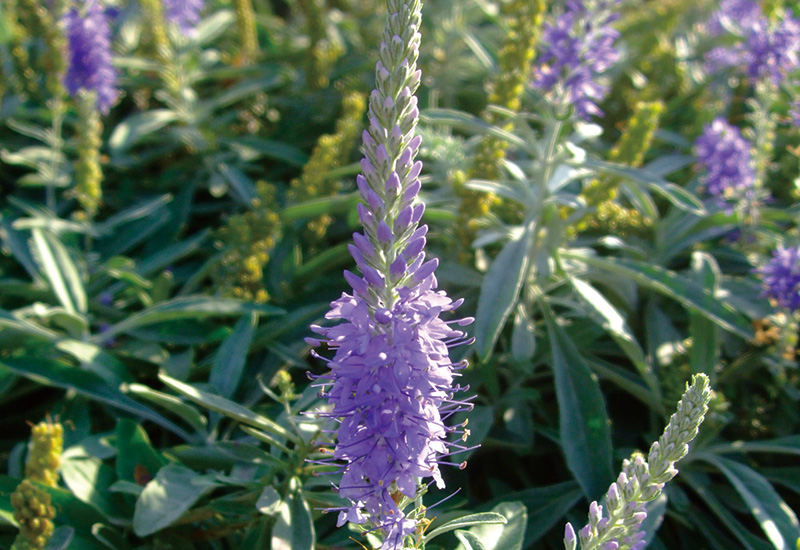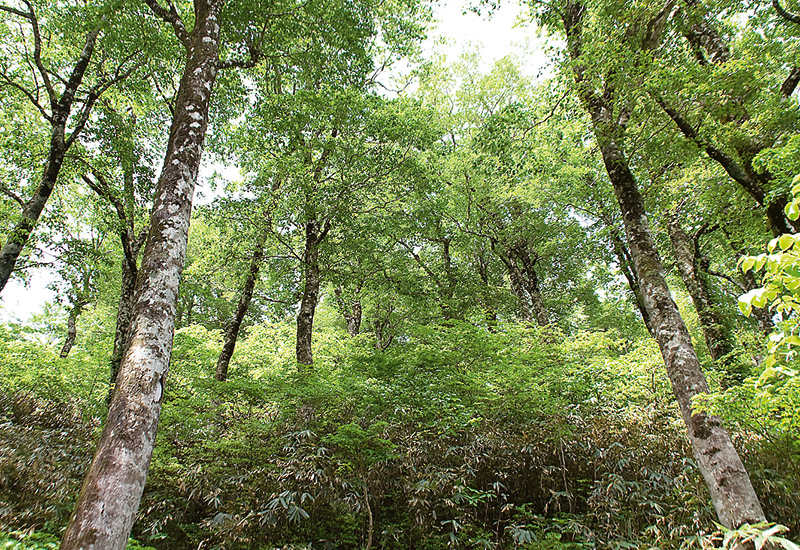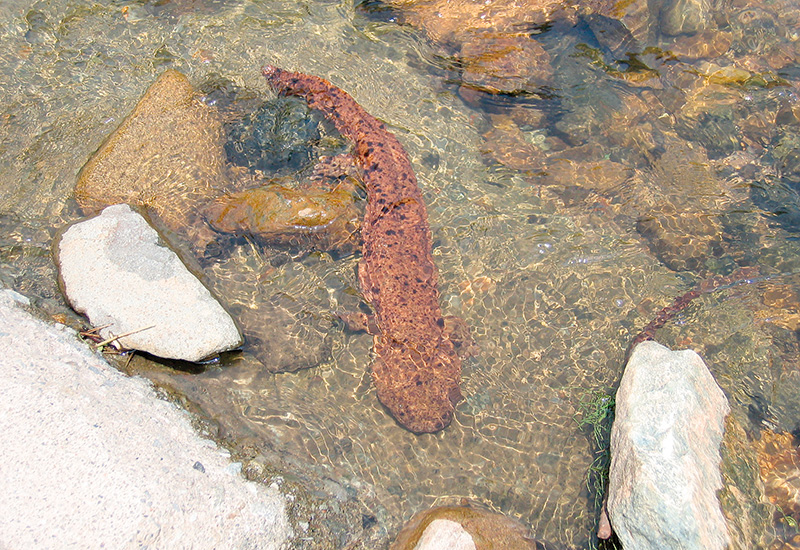Wealth of Ecosystem
Plants of the San’in Kaigan Geopark
In the San'in Kaigan Geopark, unique plants are distributed in each region reflecting the diverse topography coupled with climate of the Sea of Japan.
In the rocky coastal area, for example, various marine algae, such as sargasso and wakame seaweed, adhere to rocks, forming marine algae beds. Sand beaches are occupied by characteristic beach plants adapted to sandy soil and a dry climate, such as Japanese sedge and sea bells. In addition, there are many places where evergreen broad-leaved forests are left for long time even along the coastal area such as precinct of old shrines and coastal forested area for the purpose of encouraging fish breeding.
Meanwhile, natural forests consisting of deciduous broad-leaved trees, such as Japanese beech and oak, spread across the inland mountain areas, such as the area around Mt. Oginosen.
Moreover, one can see plants characteristic of each area all through the year. They include Veronica ornata, which grows naturally only in coastal area of the Sea of Japan and is the symbol flower of Kyotango City, Daily lily, which grows in sunny grassland and symbol flower of Kami Town, Baikamo (Ranunculus nipponicus) which flourishes in rivers and spring ponds including the Takimigawa River, Shin’onsen Town, whose existence indicates that the natural environment around it is in good condition, colonies of Japanese Iris in the Karakawagawa river, Iwami Town, and wetland vegetation found in Onuma Marsh in the Hachikita Highlands in Kami Town.
 Veronica ornata
Veronica ornata
 apanese beech
apanese beech
Animals in the San’in Kaigan Geopark
The distribution of some of the animals in the San'in Kaigan Geopark is markedly affected by geological history and complex topography. In addition, there are many species designated as endangered species and natural monuments.
There are two types of killifish in Japan, Kitano Medaka (Oryzias sakaizumii) and Minami Medaka (Oryzias latipes), but the distribution boundaries of these two species runs in northern Hyogo prefecture and Kyotango city, and hybrid groups can be seen in these areas. The distribution boundary between the Hynobius abei salamander and the Hynobius nebulosus (San’in) salamander is located near the prefectural border between Tottori and Hyogo prefectures. All of these are also endangered species. Furthermore, we can find endangered species such as, for bird, golden eagles that live in mountainous area, for insect and spider, Japanese tiger beetles and Isokomori spiders (Lycosa ishikariana) that live in the Tottori Sand Dunes, and Hinumaito dragonflies that live in the wetlands of the Maruyamagawa River.
As the natural monument, the giant salamander, which is called a living fossil, is designated as a national special natural monument, and the dormouse that lives on the trees of the forest is also a national natural monument. In the Toyooka Basin, once became the last remaining habitat of Oriental White Storks (national special natural monument) in Japan, community-wide efforts are being made to creating a community where people and the storks live together. Various efforts were made around the Hyogo Park of the Oriental White Stork to restore their habitat and returning them to the wild. Over 500 oriental white storks are being bred in the park and they live in the vicinity area. The Park also has an exhibition cage and observation site designed to enable visitors to observe the storks from up close.
 Japanese giant salamander
Japanese giant salamander
 Oriental White Stork
Oriental White Stork
